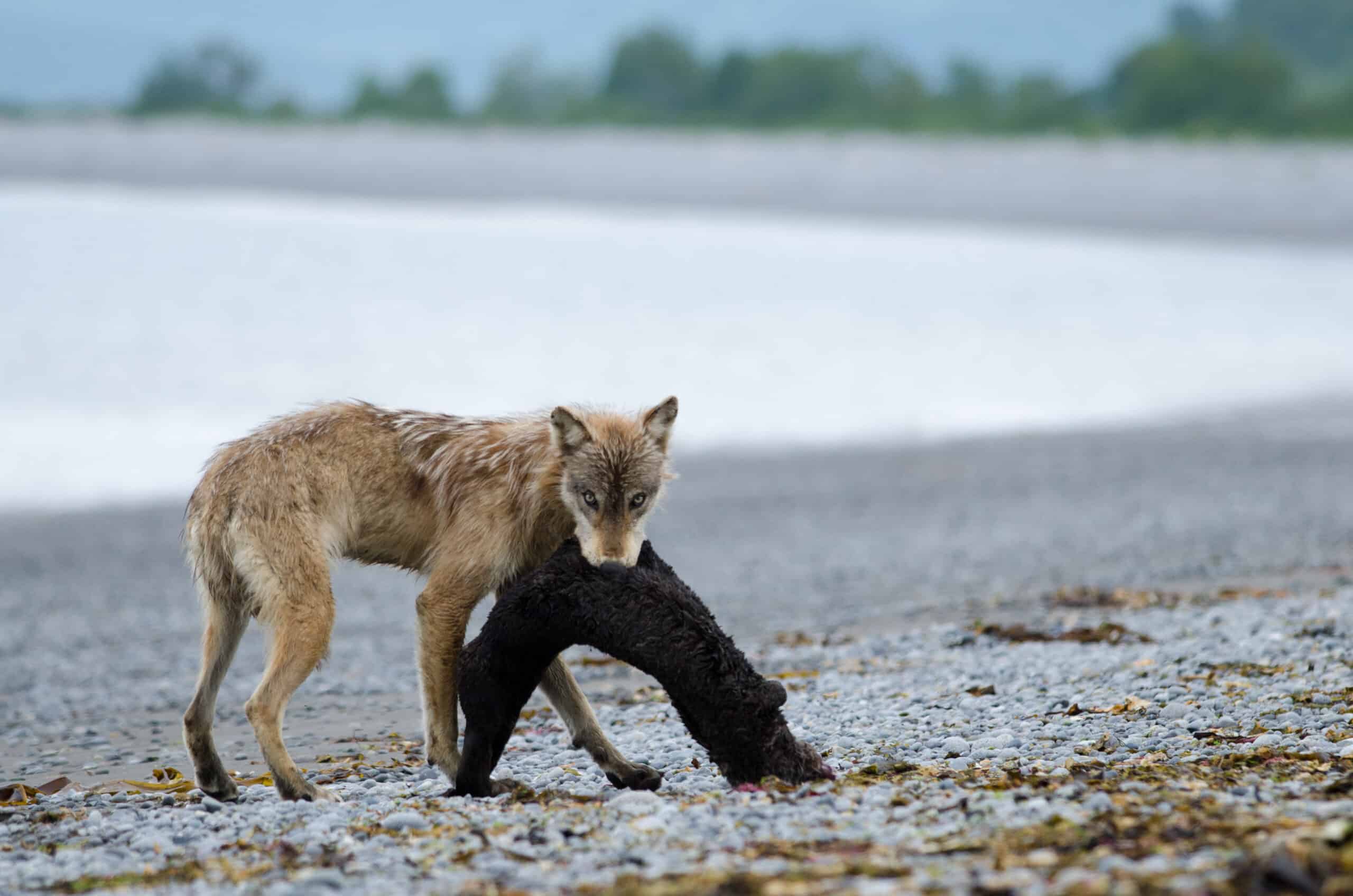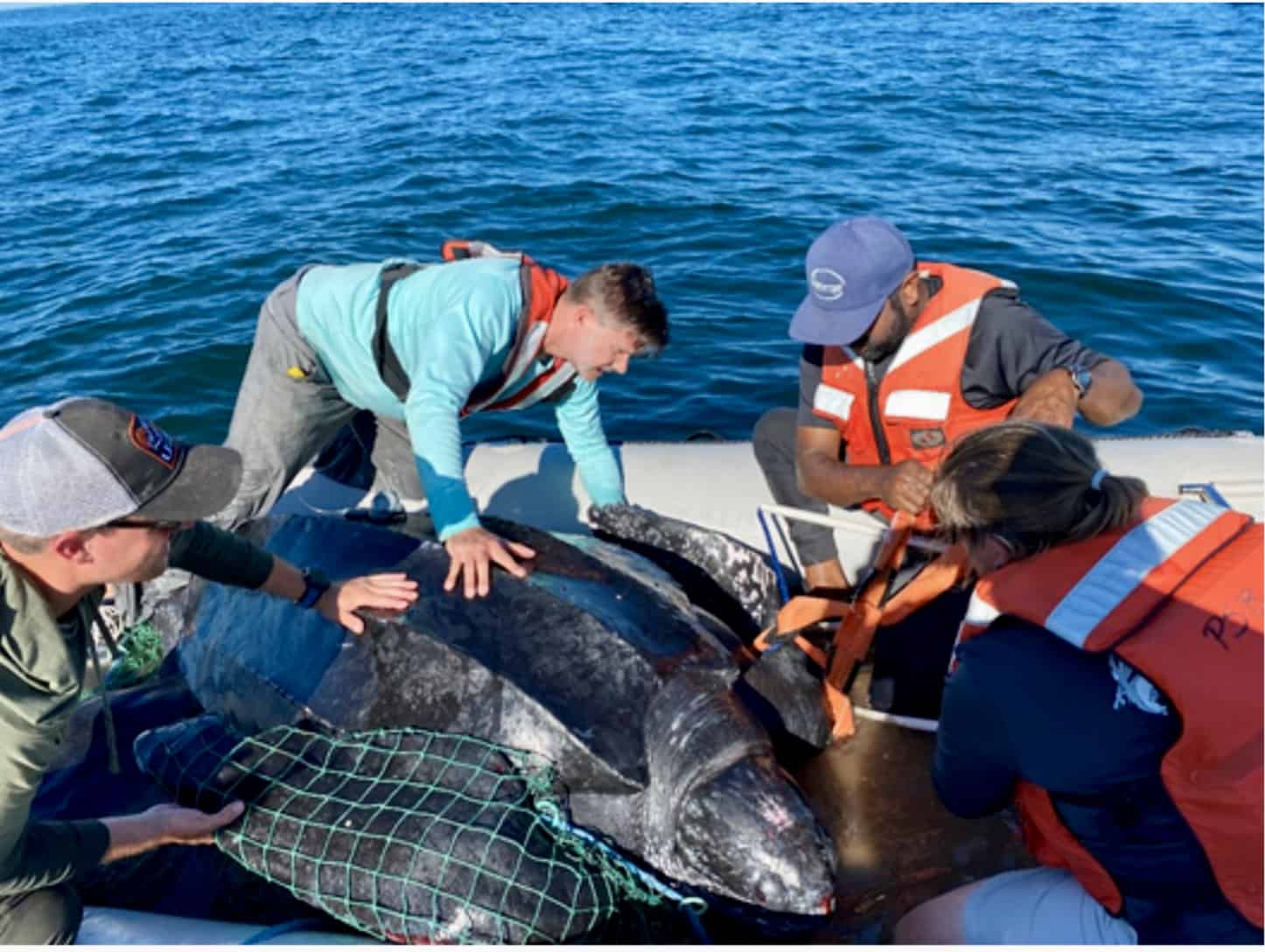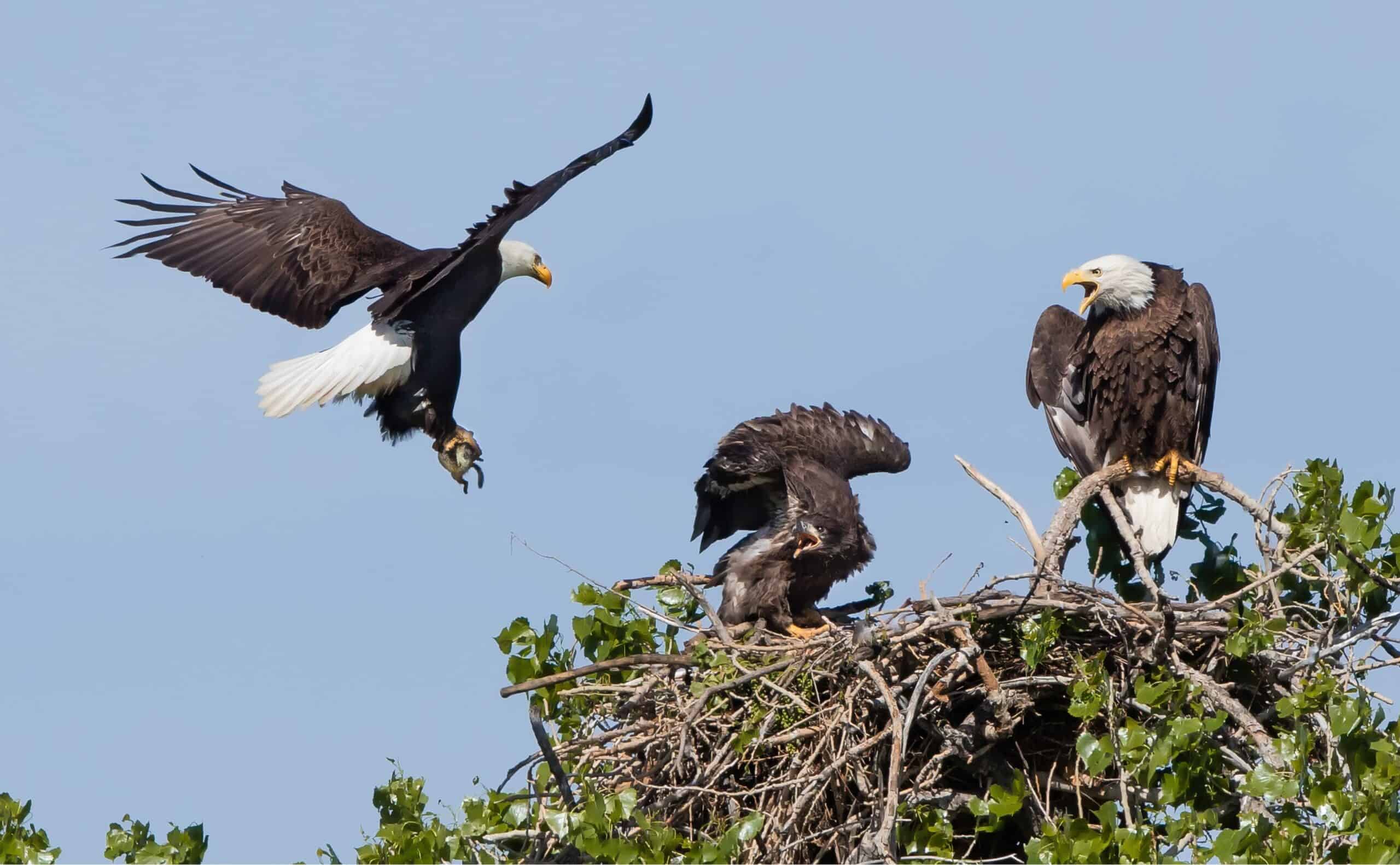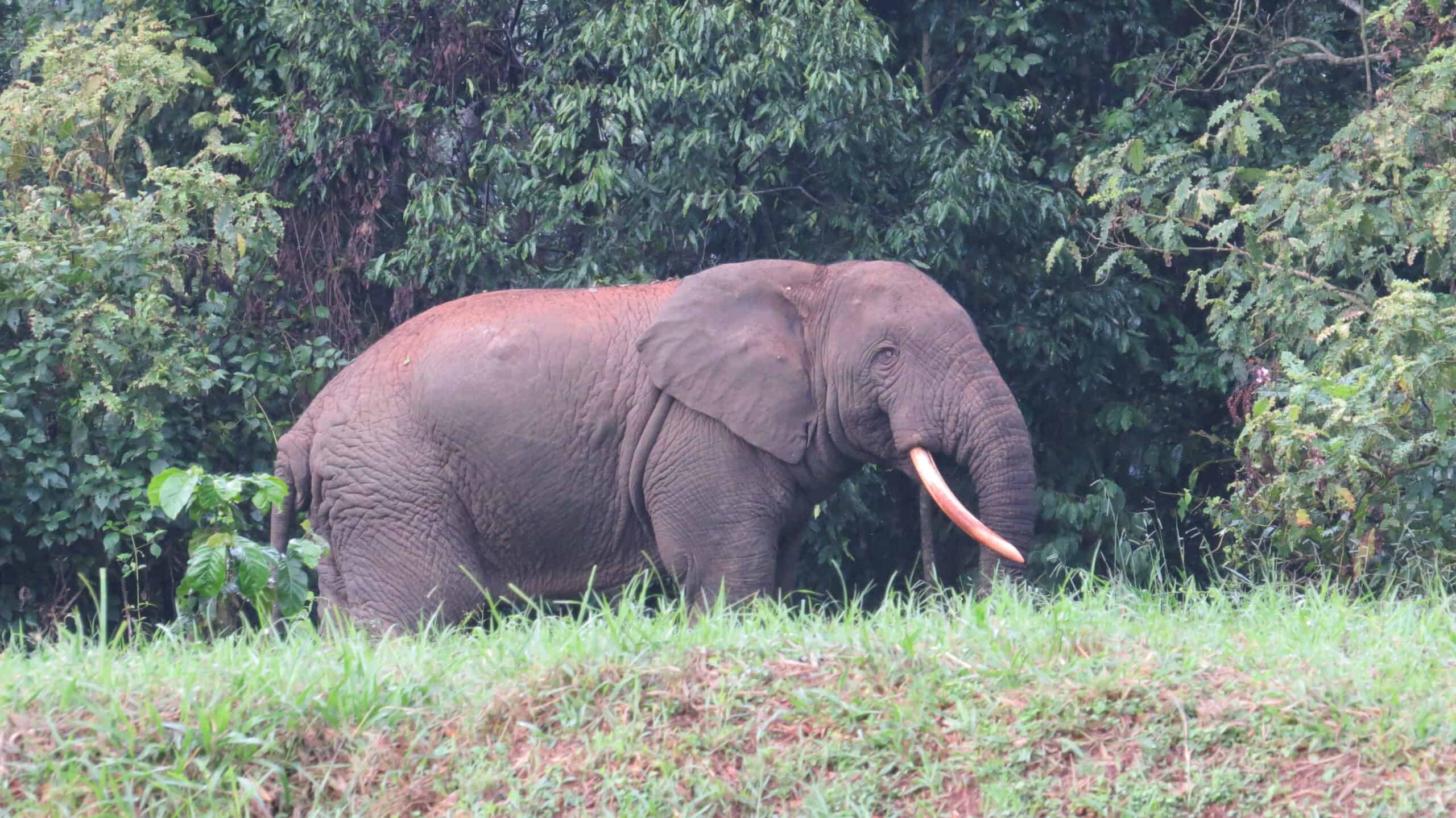Share this article
Wildlife Featured in this article
- gray wolf
- sea otter
- harbor seal
Wolves prey on sea otters, seals in Katmai
The findings may be important to consider in wolf management
When Kelsey Griffin was spending her first summer working in Katmai National Park in 2016 she noticed something intriguing.
“Seemingly out of nowhere, this white wolf just walks by fairly close to us carrying an otter,” Griffin said.
It was an awesome sight, but it also raised some questions. Is this something wolves (Canis lupus) often do on the coastline? How often are they catching sea otters (Enhydra lutris)? Are they hunting them? Scavenging them?
“I just had all of these questions and then pretty quickly found out that no one knows the answer to them,” she said.
Griffin, now the director of the Ocean Alaska Science and Learning Center with the National Park Service, set out to answer some of these questions by observing the canids in the park. She led a study published in Ecology with her findings.
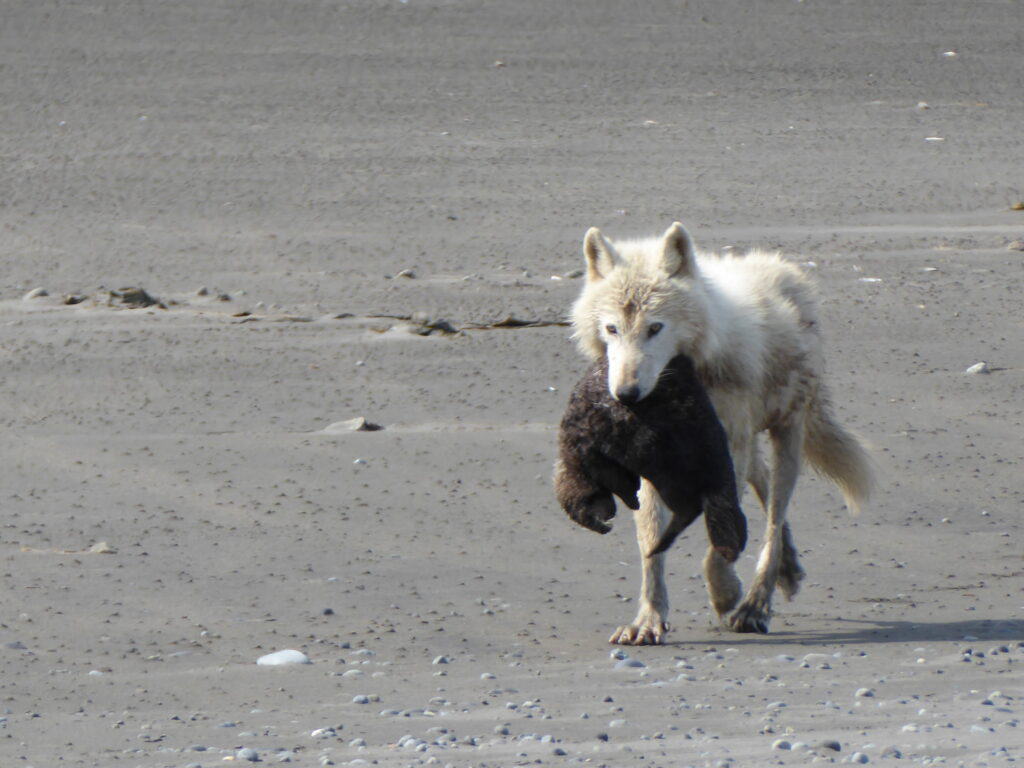
First, she and her colleagues wanted to find out how a wolf might capture an otter. It was low tide when she first spotted the behavior. She wondered if that might be key. In 2016, setting up a tripod with a camera on a time-lapse setting, her team discovered that other wolves also relied on low tide, when they had more time to prey on exposed sea otters.
Sea otters weren’t the only marine mammals falling prey. The researchers also observed a wolf consuming a harbor seal (Phoca vitulina). A wolf near the mouth of a creek charged into the water and grabbed the harbor seal’s tail. After about a 30-minute struggle, the wolf dragged the exhausted seal onto a sandbar and consumed it.

To see if they could document more instances of wolves preying on sea otters, the team planned a visit during low tide in 2021, setting up a spotting scope far from the coast so as not to interfere. “As soon as we arrived, we saw wolf activity,” she said.
Within a few days, they witnessed wolves ripping apart a sea otter. Griffin and her colleagues believed a female wolf had caught a sea otter that had hauled out. Two male wolves soon joined, and the three emerged carrying the sea otter. “They just kind of started to pull it apart,” she said.
After the wolves left, the team checked out the kill site. Like crime scene investigators, they realized the evidence—including a fresh blood trail—suggested this was a live kill, not a scavenging event. It was probably opportunistic, Griffin said, but it raised a larger question. How much of these wolves’ diet is made up of sea otters or other marine mammals?
Griffin thinks that events like these probably happened more often historically in Katmai, before the fur trade, when sea otters were abundant. It’s possible the recovery of sea otters on the coast restored this relationship between sea otters and wolves.
The researchers’ findings raise new questions and management implications. In past research on Pleasant Island in Alaska, wolves depleted their ungulate prey and ended up switching over to consuming sea otters as their primary food source. Ellen Dymit, a graduate fellow at Oregon State University and a coauthor on the more recent paper, said it’s possible that in areas where wolves are eating sea otters in Katmai, there are also low densities of moose.
If wolves are depleting moose, Dymit said, “that’s a big concern for all sorts of interest groups like managers, hunters, etc., because as soon as you start talking about population numbers, a game species becomes an economic issue and a livelihood issue for people too.”
Still, Griffin said, it’s important to take these alternative prey sources into consideration when determining the role wolves play in Katmai. “This just kind of adds to the body of evidence that wolves are definitely impacting the nearshore environment and potentially marine mammals and their populations,” she said. “So we need to consider them when we think about the functioning of nearshore ecosystems.”
It’s also important to learn more about wolves in coastal environments as climate changes, she said. Heat waves that change the timing of salmon arrivals and marine food webs could also impact marine mammals, which could affect wolves.
“It’s important for us to understand how these systems are functioning now,” Griffin said, “and if prey populations change how that might reshape the nearshore environment.”
Header Image: A young wolf with a sea otter. Credit: Landon Bazeley



